Excitement about the speed of development in China is nothing new. This year is no exception. We have selected a number of sleek and futuristic projects by the world’s leading architecture practices that are expected to be completed this year.
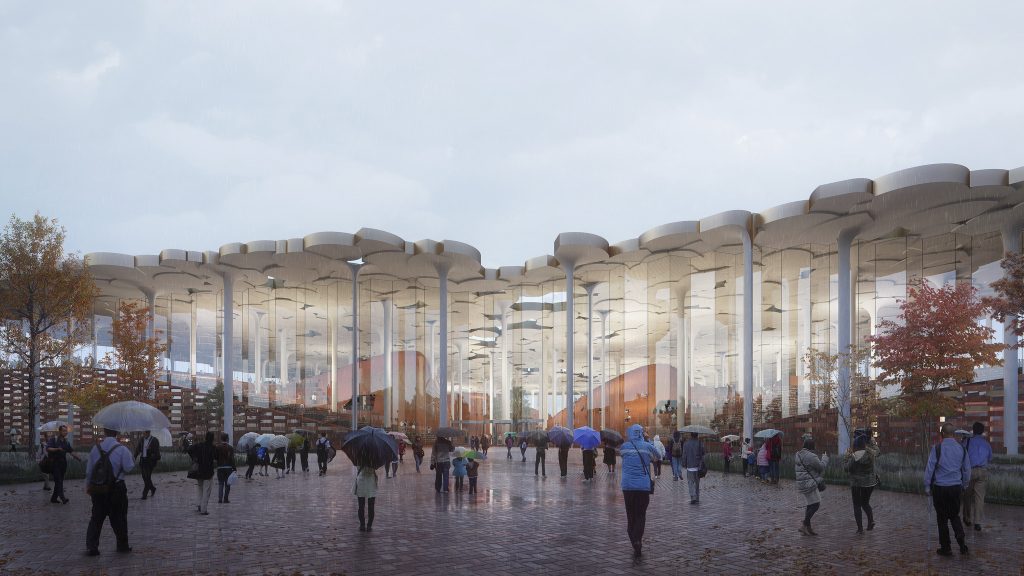
The new headquarters for DJI, the world’s leading robotics company will be unveiled later this year in Nanshan District, to the southwest of Shenzhen. The new building designed by Foster + Partners is set to be the ‘heart of innovation’ for the company, defying the traditional idea of office spaces to form a creative community in the sky.
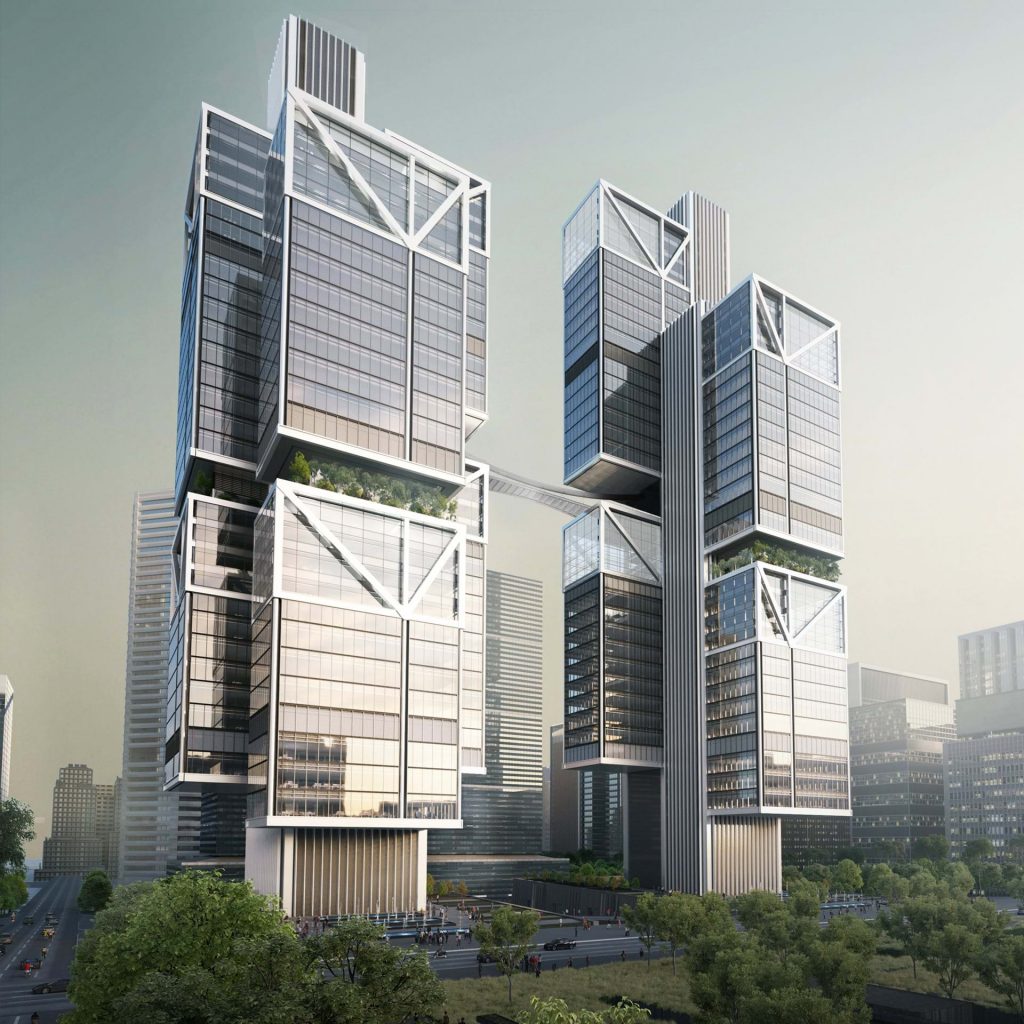
DJI HQ by Foster + Partners
The headquarters comprise a pair of towers made of stacked glass blocks, with floating volumes cantilevered from central cores by large megatrusses and circular profiled steel hangers. The innovative suspension structure reduces the need for columns, thus creating impressive and uninterrupted office and research spaces. The towers will house research and development spaces, alongside the office and public functions – including a sky bridge that is intended as a platform for showcasing the latest drone technology.
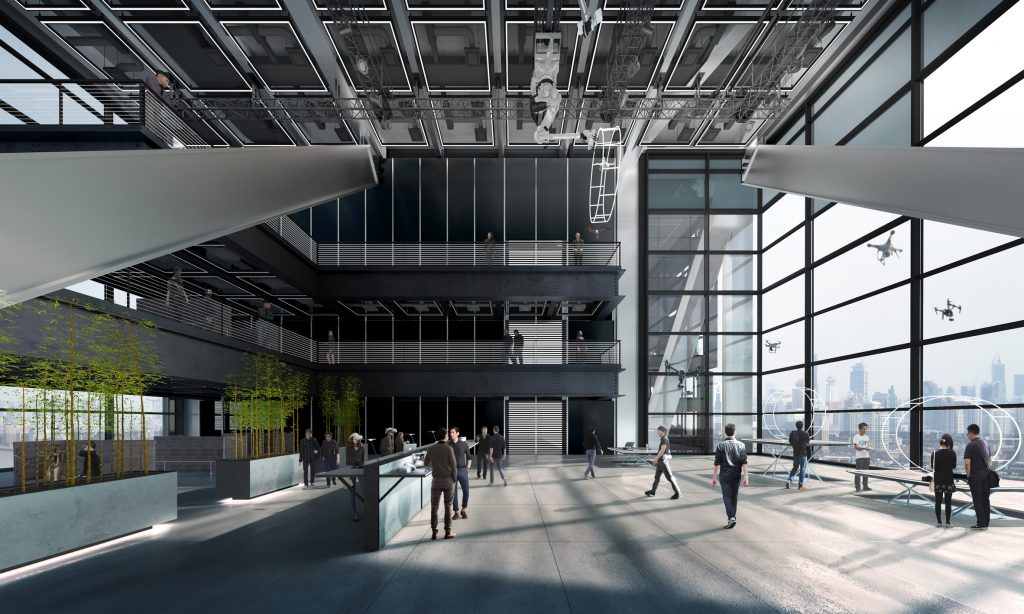
DJI HQ by Foster + Partners
At ground level, the podium will feature a series of gardens that draws the surrounding greenery into the site. Based on minimalist Zen gardens, these are designed as contemplative zones for the DJI staff to enjoy. Here, the ground floor will include a public exhibition space as well as a new theatre that will be used for product launches. There is also enough space for a wide variety of staff facilities from state-of-the-art gymnasiums to robot fighting rings.
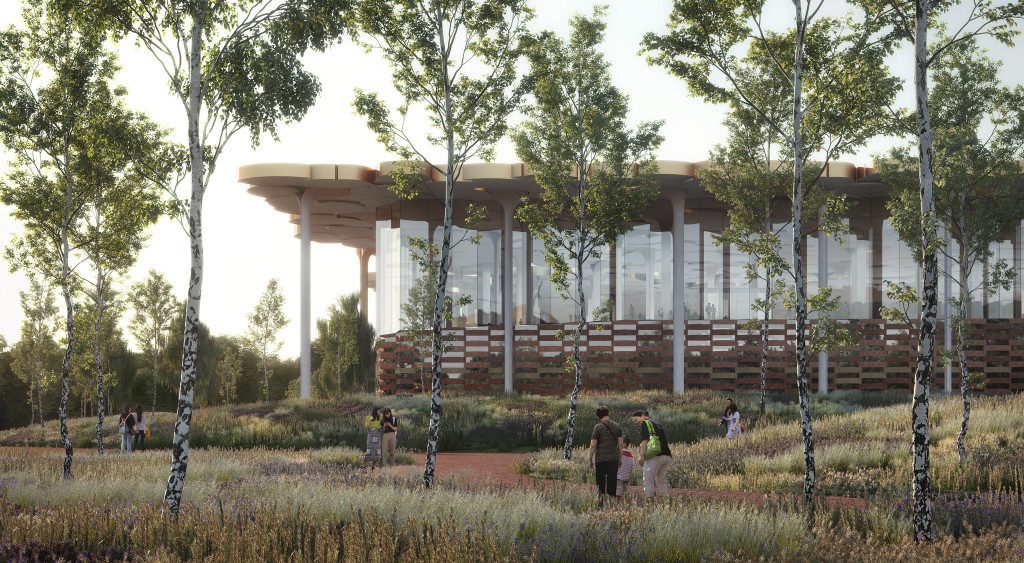
Beijing Sub-Center Library by Snøhetta (also header image)
Meanwhile, Norwegian architecture studio Snøhetta is working at the glass-clad building for a library in Beijing, which is going to be China’s first self-supporting glass-facade project. The new Beijing Sub-Center Library will take shape as a glass-enclosed structure characterized by a collection of 16-metre-tall tree-like columns that support the library’s roof above.
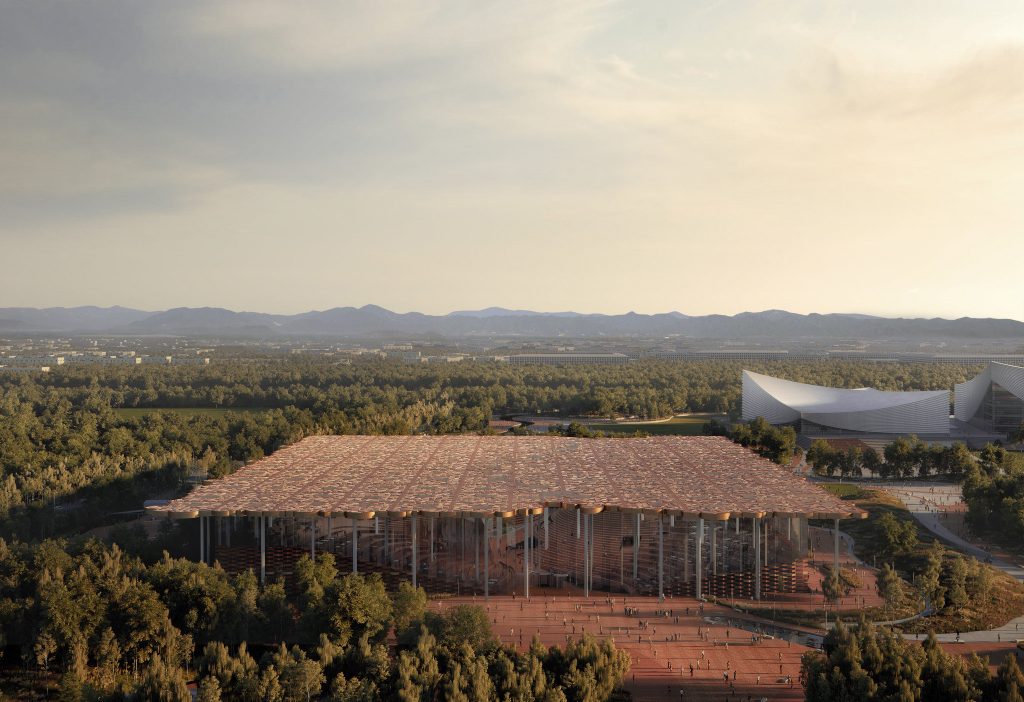
Beijing Sub-Center Library by Snøhetta
The tall linear columns have been conceived by the studio as a reference to a ginkgo-leaf canopy – a 290 million-year-old tree species that is native to China. Each of the building’s columns will be fitted with technology that aids the library’s climate, lighting, acoustic performance and rainwater disposal, while the roof of the building will be topped with an integrated photovoltaic system that will it with renewable energy.
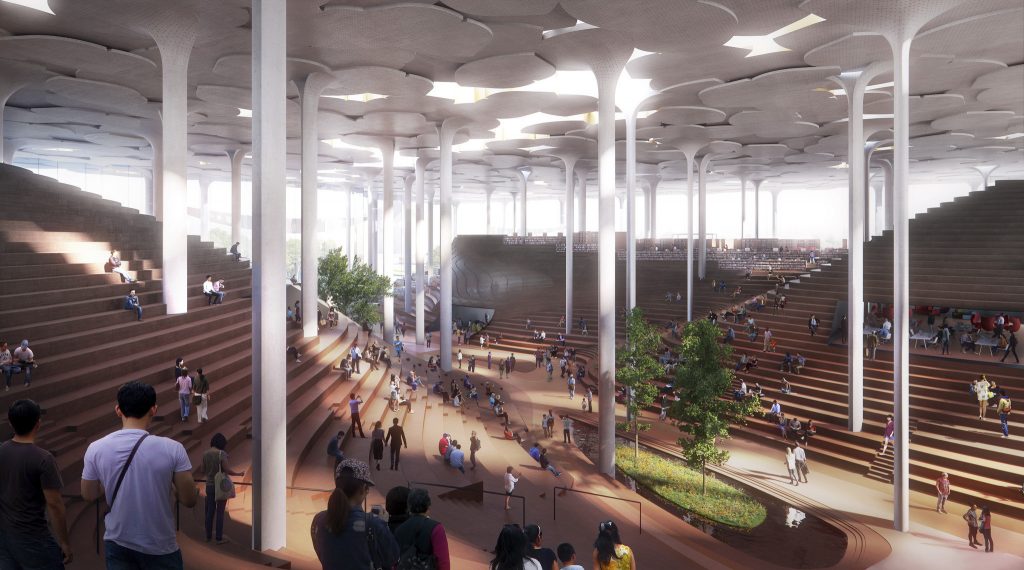
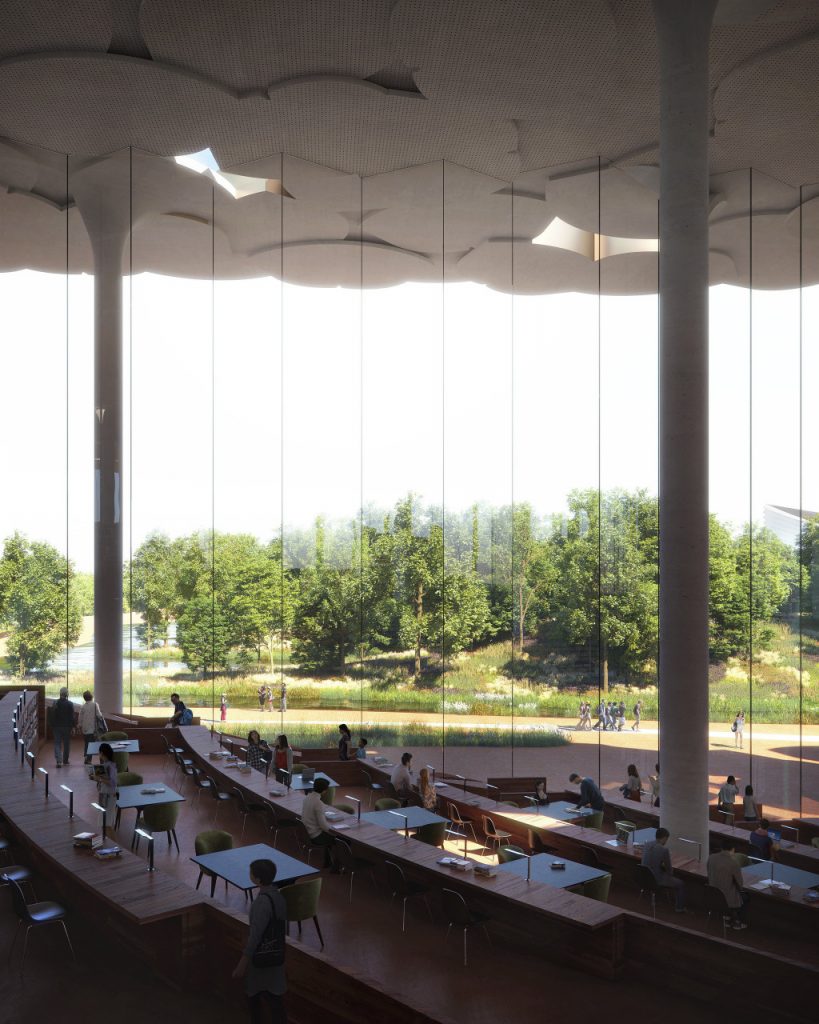
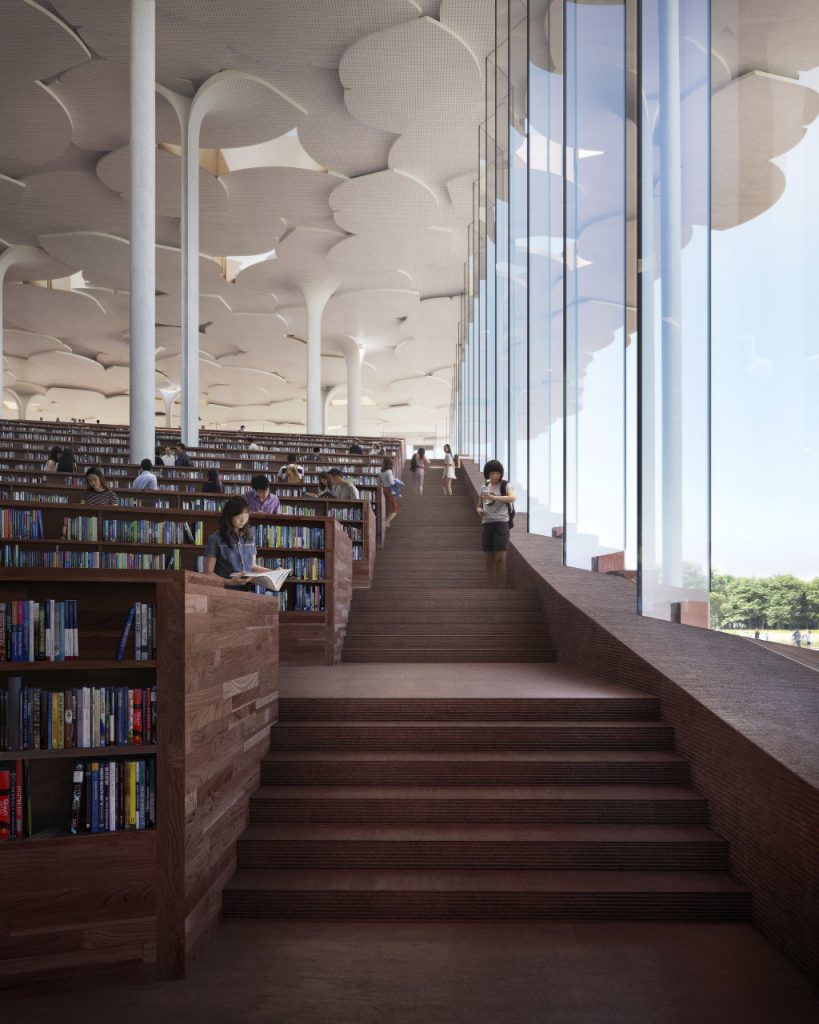
Beijing Sub-Center Library by Snøhetta
Just as the exterior is intended to resemble the surrounding environment, the interior will comprise a “stepped landscape” of hill-like volumes, which the architects hope will invite people to sit down and take a break at any time on their journey through the building – creating an informal zone and the notion of sitting under a tree reading your favorite book. Rows of book collections, reading spaces, a large amphitheatre and study areas will be built into the undulating floorplan of the library.
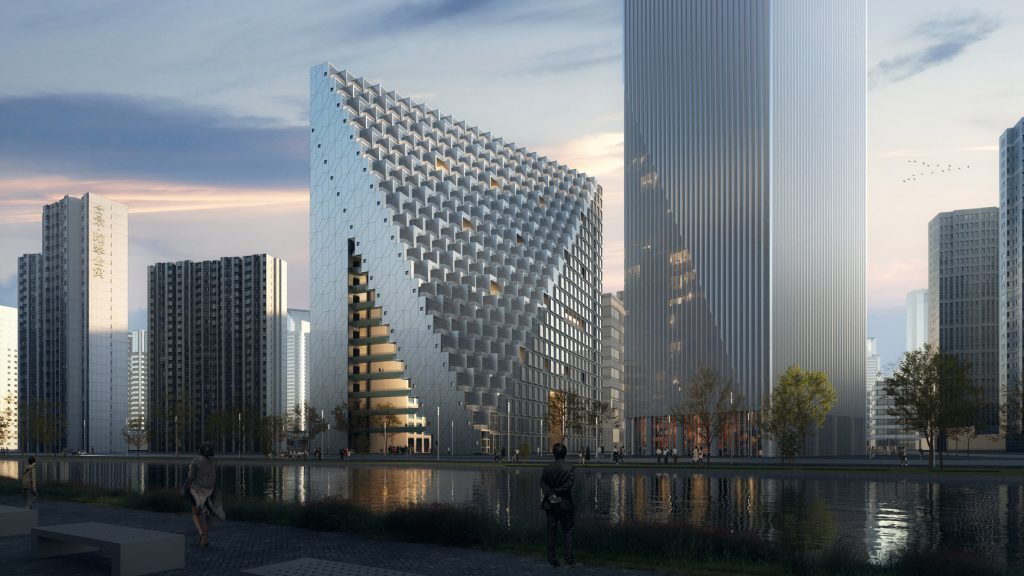
Xinhu Hangzhou Prism by OMA
Another building to be completed in 2022 is Xinhu Hangzhou Prism by OMA commissioned by local holding company Zhejiang Xinhu Haichuang Group to form the heart of its “future tech city” in Hangzhou, which is home to some of China’s largest technology companies.
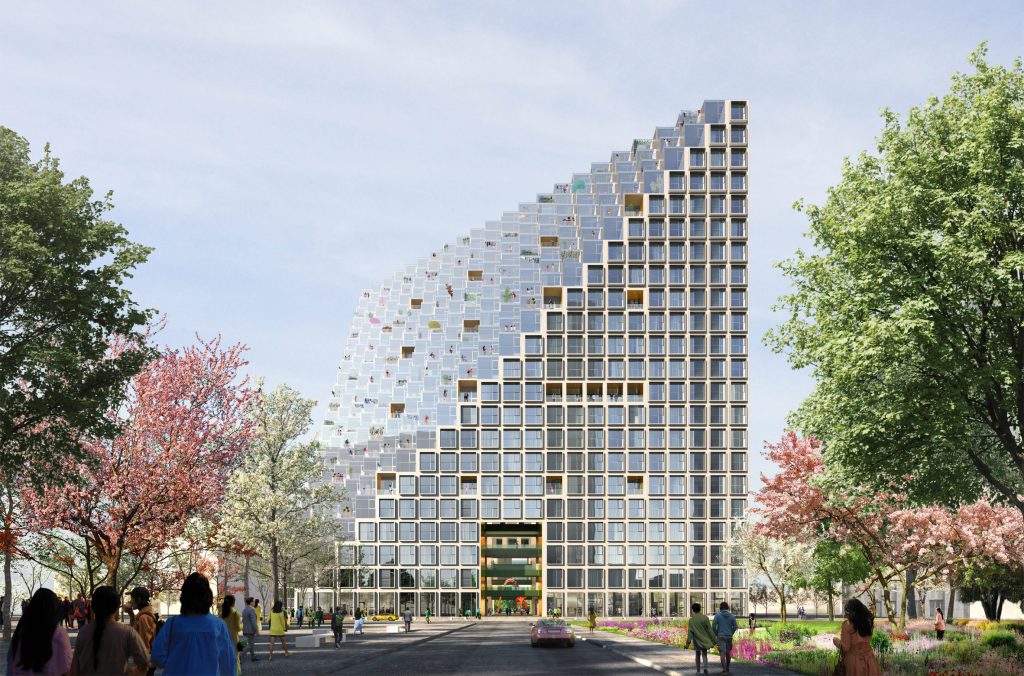
Xinhu Hangzhou Prism by OMA
he 50,000sqm mixed-use building will host a hotel, retail space, and apartments, as well as a broad repertoire of communal outdoor spaces. Modelled on the ancient Chinese proverb “above, there is heaven; below, there is Suzhou and Hangzhou”, the design will be distinguished by its two terraced façades lined with projecting cube-shaped balconies.
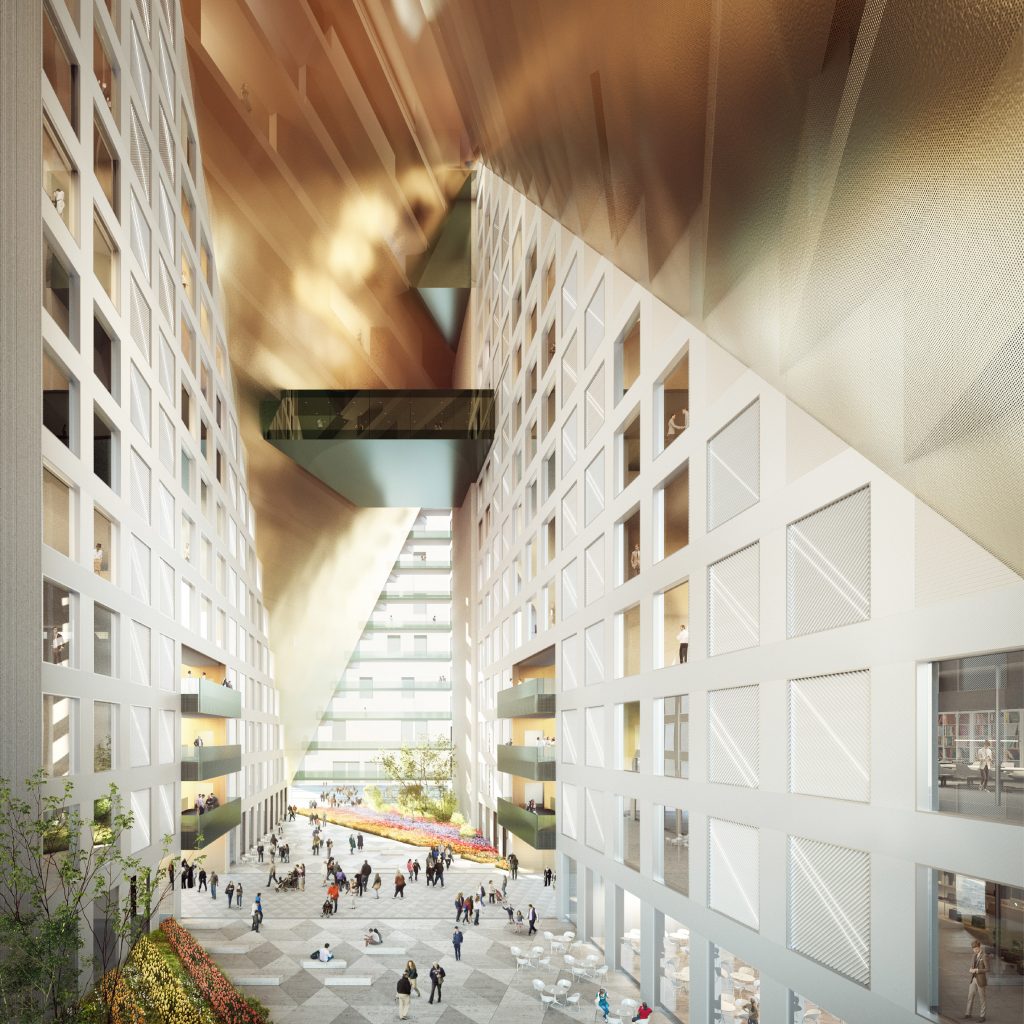
Xinhu Hangzhou Prism by OMA
At the ground level, the flat oblique facades will be punctured by a large void that will accommodate a publicly accessible plant-filled “garden atrium” with water features and playgrounds.